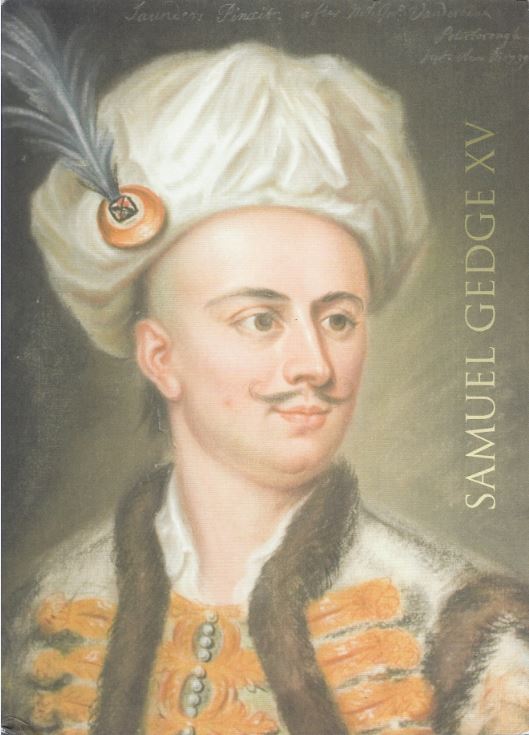Antiquarian English Works from Samuel Gedge Ltd.
- by Michael Stillman

Antiquarian English Works from Samuel Gedge Ltd.
Samuel Gedge Ltd. Rare Books has issued their Catalogue XV, or Catalogue 15 for those of you who don't speak Latin. As we have come to expect of Gedge, there is a mix of material, books and ephemera. Most of it easily qualifies as antiquarian, and most comes from England. Beyond that, anything might appear. There is even a wooden medallion with Shakespeare's carved somewhat-of-a-likeness, the wood coming from a mulberry tree Shakespeare supposedly planted. The medallion was produced around 250 years after Shakespeare's time, but that still makes it 250 years old today. Here are a few specifics from the pages of Samuel Gedge's 15th catalogue.
The gentleman pictured on the cover of this catalogue is John Sturges. Sturges was an architect working around Northamptonshire and the East Midlands in the late 17th to early 18th century. He was well enough respected to be awarded some significant projects during that time. This drawing is a pastel by John Saunders, evidently based on an earlier mezzotint. Whether Sturges was still alive at the time – 1739 – is not clear. He certainly wouldn't have looked that young if he was. Saunders was an itinerant portrait painter working in the same area as Sturges around the middle of the 18th century. Why Sturges was dressed up in a Turkish costume is unknown as he was not a Turk. That curling mustache also appears to be a bit of styling to perhaps make him look more a Turk, as it was not present in Sturges' mezzotint. Item 95. Priced at £2,200 (British pounds, or roughly US $3,458).
For those who collect the works of the great illustrator and cartoonist John Tenniel, here is an obscure item you probably never knew existed. Tenniel took a job as a lead cartoonist for the British humor and satire magazine Punch in 1850 and stayed for over half a century. To Americans, he is likely better known as the illustrator of Lewis Carroll's two Alice books. However, in 1842, he put his paint brush to work for a different type of painting. The then 22-year-old Tenniel's name shows up on a playbill for The Boundary Question, an “original petite comedy,” which was to be followed by Why did you die, and Advice Gratis. Tenniel and his brother William both had parts, but more importantly, the bill notes, “...the scenery has been painted expressly for the occasion by Mr. John Tenniel.” Over half a century later, Tenniel was knighted by Queen Victoria, henceforth being known as Sir John Tenniel. Item 117 £650 (US $1,021).
In the good for what ails you department, item 77 is a handbill for Rhubarb and Ginger Pills, Prepared by Wm. Randall, Chemist. These pills are ideal for stomach disorders, specifically “disorders of the bowels...cases of indigestion, loss of appetite.” One might think this combination would give you indigestion. You might also be concerned that the good chemist was using the deadly parts of the rhubarb plant, but he assures us “every medicine prepared as directed in the pharmacopeia of the Royal College of Physicians...” This handbill dates to circa 1807. £250 (US $390).
Item 91 affords an opportunity to purchase an indulgence. No, not for yourself. This is a certificate issued in 1675 to Ludovicum Jacobum van Buyten, a Flemish pilgrim who traveled to Rome in the Jubilee Year of 1675. He visited the tombs of St. Peter and St. Paul, whose images are displayed in woodcut medallions on the certificate. There is also a papal seal. Around 1.4 million pilgrims are believed to have visited Rome for the Jubilee, presided over by Pope Clement X. £250 (US $391).